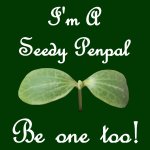I really enjoy rootling about in the countryside to find plants that I can eat. I love nature, and all the things in it, so I have invested time in learning common edible species, and then going out to find them. I often take the Big Guy, but am also happy to go alone, although a dog would be great company.
I do this both because I am concerned about eating local food, and also because I get a bit bored with cabbage in the hungry gap, come early spring. I think it is a useful skill to have, beyond the usual brambling that I am sure almost everyone I know has indulged in at one time or another.
I have tried a number of plants, some of which I have really liked, and some of which I have not. It is a pleasant way to pass a few hours, and mostly you will be eating weeds, so many gardeners will appreciate your efforts.
I also have a fishing rod and do eat food that people who I know have hunted themselves. I think that this is a sustainable way to eat fish and meat – catch only what you can eat, eat game. However, this is not the focus of this post. I may get back to this topic at a later date.
When you forage for your own food, you do run risks. There are many plants and fungi that can make you mildly to quite ill, and there are some that will make you quite dead! Some really tasty species are very easy to confuse with some really deadly ones. Common sense and caution are your friends if you decide to go and sample nature’s larder.
There are also a number of laws and bylaws governing foraging, so try to make sure you know what they are in your area, in order to avoid having your collar felt!
I go by the following basic rules, which should help to keep you safe, and largely legal. You may wish to add your own in the comments.
- The laws on foraging tend to be fairly complicated, there are differences between countries, and there may also be local bylaws in effect. Please make sure that you know and follow the laws governing foraging where you are. You can generally find out what may apply through your local council, although be aware that this can be time-consuming, and you may get passed onto different departments and agencies.
- There may well be more complicated laws, and outright bans in some places, on gathering mushrooms for commercial purposes. I would not take the risk of attempting to gather mushrooms for sale. Unless you are an expert, I really don’t recommend that you do either.
- It is polite, and probably a very good idea, to get permission from the landowner before you gather food from his land.
- Don’t remove all of the plants in one area. If greedy people have taken them all before they can reproduce, there will be none left for next year. Besides the conservation aspect, older mushrooms and fruits are likely to be unappetising, either through ‘going over’ or by becoming infested with maggots.
- Try not to gather food too near to the roads – the things you find there may look really juicy, but they are likely to be contaminated with all sorts of chemicals that result from burning petrol. I also try not to use plants from areas where there is heavy dog use, or at least I make sure that I have washed everything thoroughly.
- Take a good field guide with you. I usually take a few with me, because plants and mushrooms are not uniform, and you need to have a good idea. A good field guide will have photos, classification charts, and will have information on habitat. I also find taking a tree field guide with me to be very useful, to help me double-check the species that I have. Similar looking mushrooms sometimes grow under different trees, or in different habitats.
- Careful identification of the plant or mushroom is required. Only by learning its identity can you be sure if it is poisonous or not. The best way to do this is to proceed with caution. Note the habitat, its appearance (if you can, both young and old specimens), the colour of its spores. Again, good field guides will have this information.
- People have different tastes and different reactions. Once you have identified an edible species, only try a small amount at first, to gauge if you have any adverse reactions.
- MOST IMPORTANTLY if you are in any doubt of the identity of your plant, or if it is easily confused with a similar, but poisonous species please err on the side of caution and do not eat it. You must be aware of what happened to that cat who was a little too curious?
Many mushroom foragers that I know tend to stick to a few patches that they know well, and to two or three species that they are sure of. You could also enlist the help of an expert, and there are many courses that you can go on to improve your knowledge. Whichever way you choose, I am definitely not to blame if you do have ill effects.
Even if I cooked it for you. You shouldn’t suffer, though, because I am careful to follow these simple rules.



